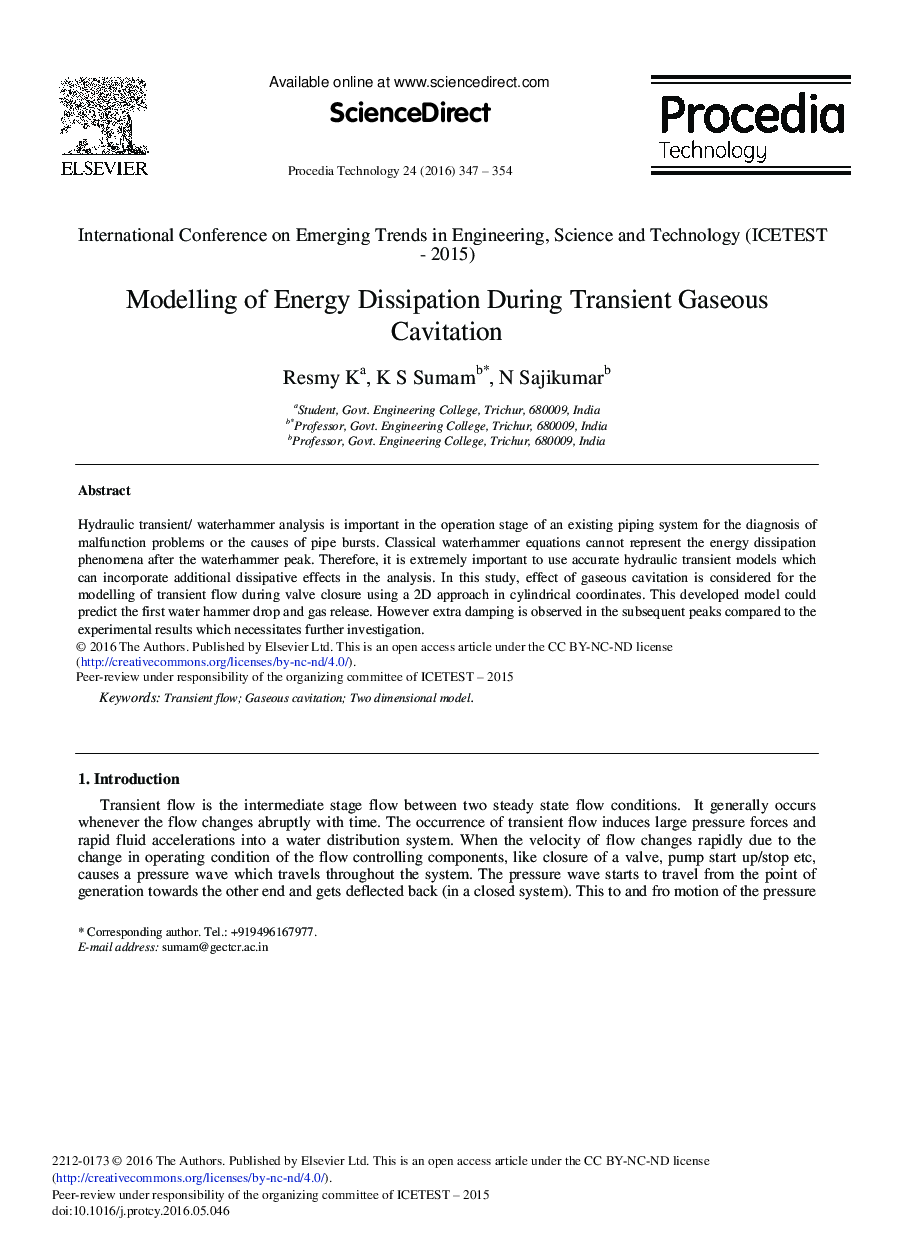| Article ID | Journal | Published Year | Pages | File Type |
|---|---|---|---|---|
| 490667 | Procedia Technology | 2016 | 8 Pages |
Hydraulic transient/ waterhammer analysis is important in the operation stage of an existing piping system for the diagnosis of malfunction problems or the causes of pipe bursts. Classical waterhammer equations cannot represent the energy dissipation phenomena after the waterhammer peak. Therefore, it is extremely important to use accurate hydraulic transient models which can incorporate additional dissipative effects in the analysis. In this study, effect of gaseous cavitation is considered for the modelling of transient flow during valve closure using a 2D approach in cylindrical coordinates. This developed model could predict the first water hammer drop and gas release. However extra damping is observed in the subsequent peaks compared to the experimental results which necessitates further investigation.
